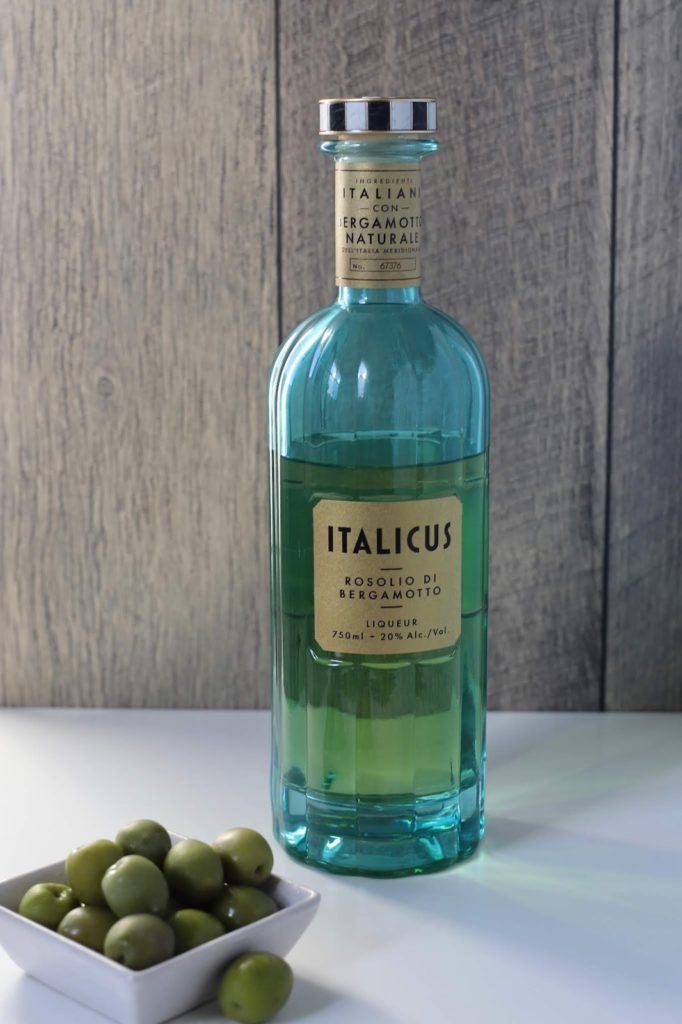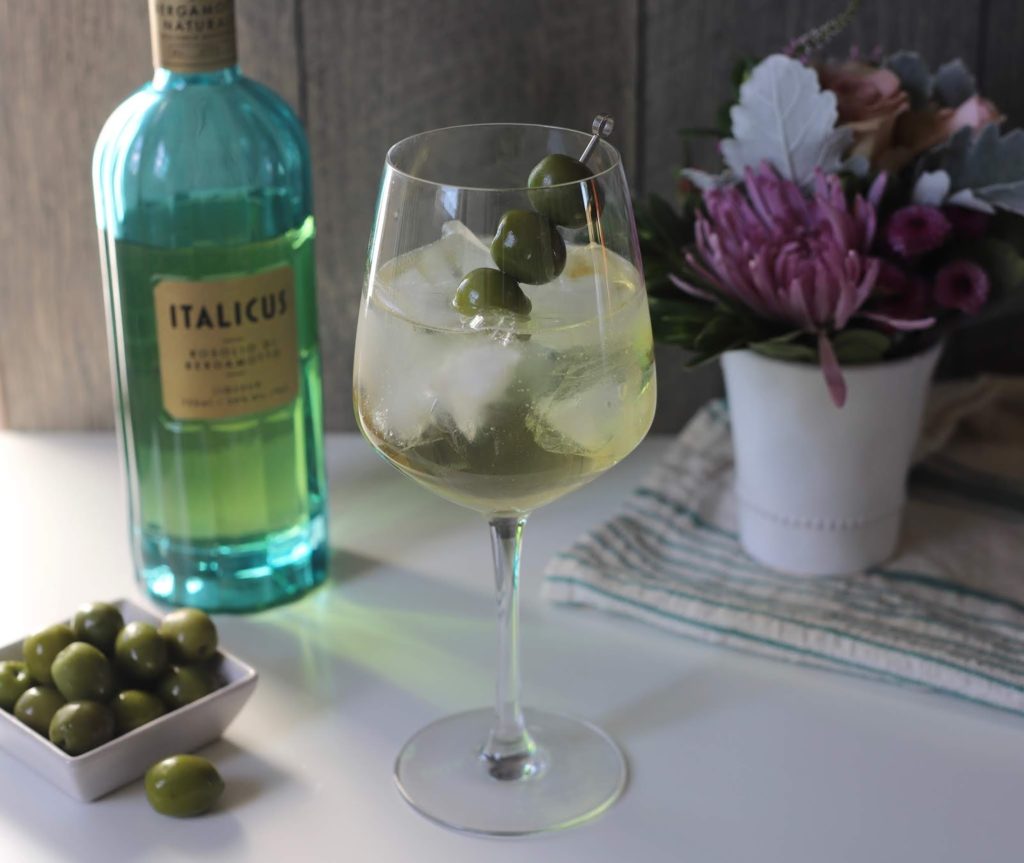If you’re not already seeing this beautiful blue glass bottle everywhere, I can guarantee you will shortly. It belongs to Italicus Rosolio di Bergamotto. Not since St. Germain have I seen a new ingredient as talked about and adored. It launched in 2016 and won a number of awards the following year, including Best New Spirit or Cocktail Ingredient at Tales of the Cocktail.
Italicus is a Rosolio, a classic type of Italian liqueur. The name is comes from a species of sundew, Drosera rotundifolia, that was classically used to flavor the liqueur. The plant is called “ros solis” in Italy. Rosolios are also frequently flavored with rose petals, which makes many people (including me!) think that this is where the name comes from. Difford’s Guide offers the best explanation and history of Rosolio that I have found if you’re interested in reading more about the category in general. While many people outside of Italy are not familiar with Rosolio, within the country it is still frequently made (often at home) and consumed as an aperitivo.
Italicus was created by Giuseppe Gallo. Born in Campania, Italy, Gallo worked as a brand ambassador for Martini & Rossi and has an extensive knowledge of amari and vermouths. He was surprised that no one outside of Italy was drinking Rosolio. He wanted to create a new spirit, drawing on his Italian heritage. He used the citrus fruit Bergamot (the same one that flavors Earl Grey tea) to flavor the liqueur, remembering how his mother would flavor dishes with its zest. The Bergamot comes from nearby Calabria, where it has been grown for centuries and is frequently used in Rosolio. Gallo set out to make a Bergamot-flavored Rosolio that would be at home on a modern bar. “It was really important to me to add to it a modern twist, a new profile that would allow bartenders to play with an additional flavor,” he told Tales of the Cocktail.
In addition to Bergamot, Italicus is flavored with cedar, chamomile, lavender, gentian, yellow rose, and lemon balm. It is bittersweet like an amaro, but much lighter, with notes of citrus and herbs. I get a slight menthol flavor from it that I did not expect. It’s easy to mix with and makes a perfect aperitif. While its flavor speaks for itself, its beautiful bottle (designed by Stranger & Stranger) doesn’t hurt either. It seems to me like a perfect example of a spirit where every aspect, from conception to creation to packaging to marketing, was done to perfection. It’s been popping up in cocktails all over Boston and no doubt elsewhere as well.
Italicus
Price: $37
Alcohol Content: 20%
Popular Cocktails: Negroni Bianco Bergamotto, Ipalicus, Spritzicus, Gin and Italicus
While I’m not too keen on the “Spritizicus” moniker its creators gave it, a classic spritz made with Italicus is definitely an enjoyable aperitivo and a great way to try out this liqueur. A garnish of olives may seem strange, but it’s a perfect contrast to the sweetness of the liqueur. If you like an Aperol Spritz, switch it up and try some Italicus.
Spritzicus
3 oz. Italicus
3 oz. prosecco
Build in a wine glass filled with ice. Stir briefly and garnish with three Castelvetrano or Gaeta olives.
Recipe from Italicus. Historical and brand information came mostly from Difford’s Guide and Tales of the Cocktail.








